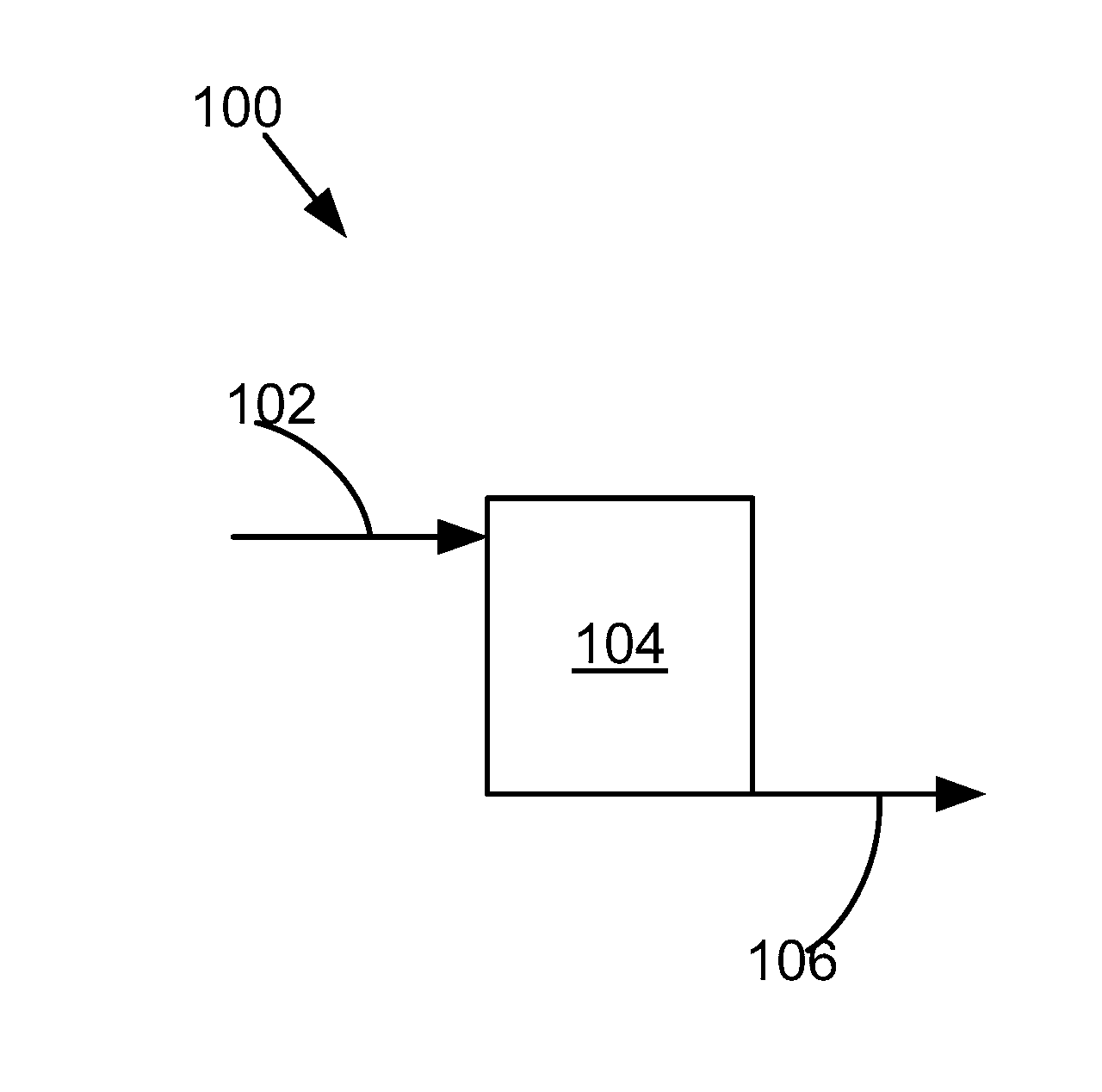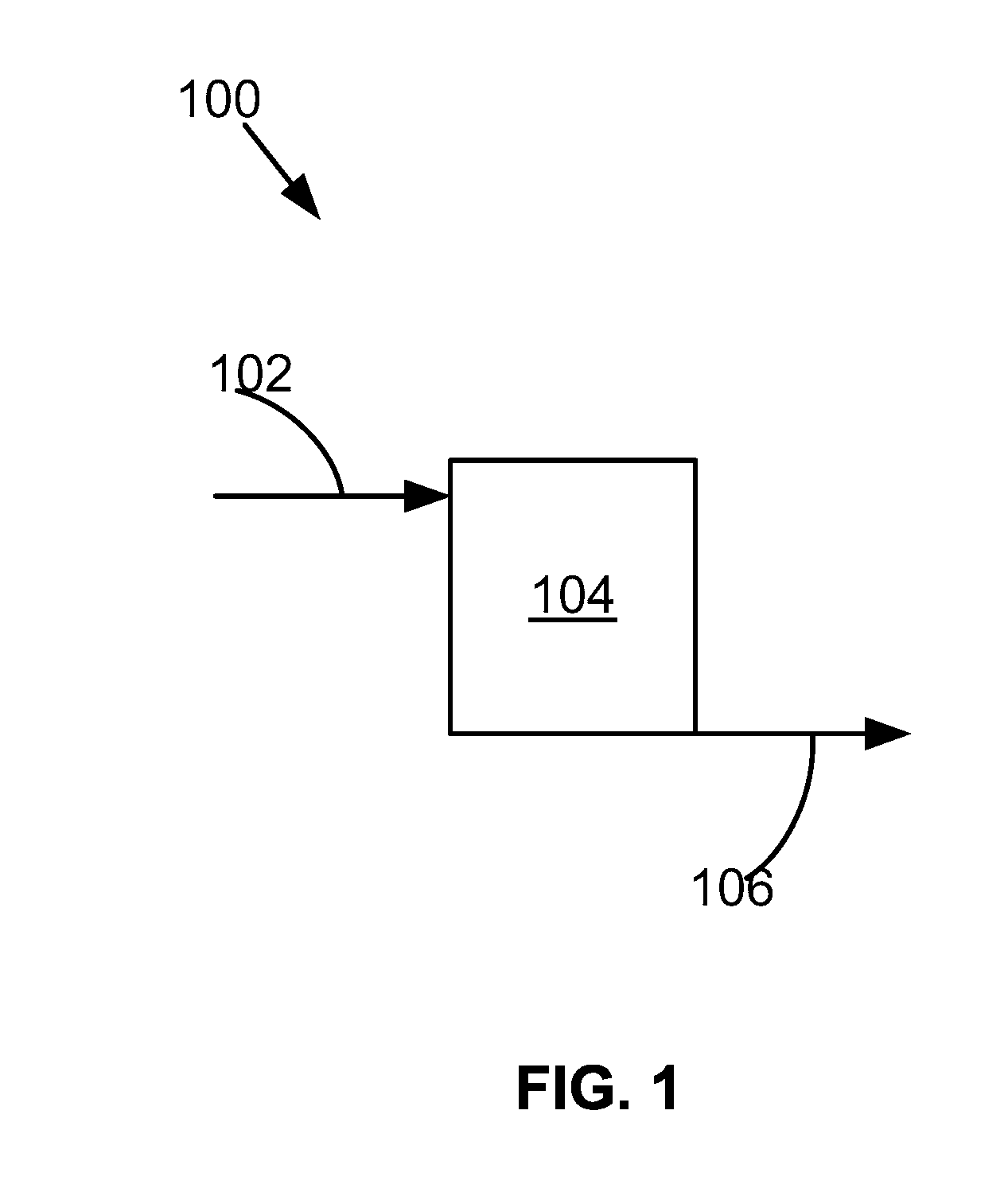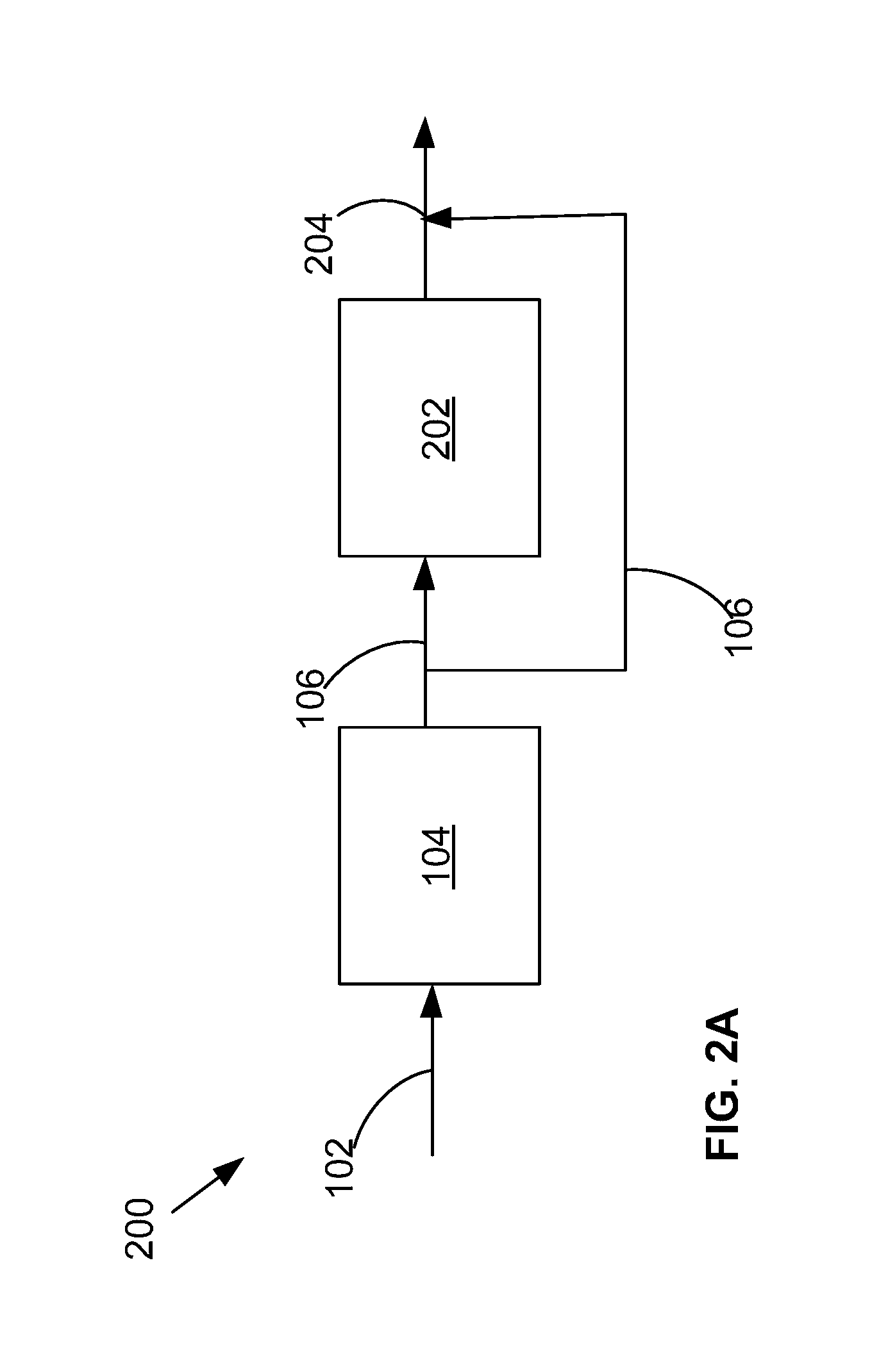Methods for regeneration of an organosilica media
a technology of organosilica and media, which is applied in the direction of combustible gas purification/modification, other chemical processes, separation processes, etc., can solve the problems of liquid condensate out of gas, explosion or fire, and pipeline condensate formation risk, so as to reduce the heating value of gas, reduce the wobbe index of gas, and reduce the hcdp of gas produced
- Summary
- Abstract
- Description
- Claims
- Application Information
AI Technical Summary
Benefits of technology
Problems solved by technology
Method used
Image
Examples
example 1
Organosilica Particle Capacity for Gas Phase Alkanes
Capacity of Organosilica Particles for Gas Phase Alkanes.
[0079]A gas sample was contacted with the organosilica particles at 25° C. at 1 atm. The organosilica particles were analyzed to determine the weight fraction absorbed by the media at breakthrough. The organosilica particles absorbed about 10% of their weight of butane, 30% of their weight of pentane, and 60 to 70% of their weight of C6-8 hydrocarbons. The increase of weight percentage of C4+ hydrocarbons indicated that the capacity of the organosilica particles has been maximized. FIG. 5 is a graph of n-alkane boiling points (° C.) versus weight fraction absorbed at break though for at 25° C. and 1 atm.
Example 2
Equipment Set-Up
[0080]A stainless steel media vessel having a gas inlet at the top of the unit, a gas outlet at the bottom of the unit, and a vacuum compressor attached to the top of the vessel was provided to gas production sites.
example 2
Testing
[0081]Trial 1. Pipeline.
[0082]A gaseous stream having a hydrocarbon dew point value of about 15.5 to 23.8° C. (60-75° F.) at a pressure of 85 psig (0.59 MPa(g)) was diverted from a sales pipeline to the media vessel containing organosilica particulate media (Osorb® media, 40 kg). The gas traveled through the column of media (approximately 8 feet in height). The gas exited the bottom of the vessel where it traveled through a particulate filter, in case fine media particles were carried through the screen in media vessel. From there, the gas stream passed through a pressure regulator and check valve and passed by sample ports before returning to the sales line. FIG. 7 depicts the molar concentration of C4+ hydrocarbons over time as determined by third party gas chromatography analysis. FIG. 8 depicts a graph of the molar concentrations of n-butane (N—C4), isobutane (I—C4), n-pentane (N—C5), isopentane (I—C5), and all hexane or heavier hydrocarbons (C6+) before and during the tr...
example 3
Regeneration of Organosilica Particles Using Internal Heating of Bed of Organosilica Particles
[0089]Equipment. The treatment vessel includes stainless steel coils (100 feet of ⅜″) wrapped in heat tape and in spaced 1¾″ apart (vessel coils). A compressed nitrogen (N2) tank was added, as well as the associated plumbing between the tank, heating coils, and vessel. An air fan was added, as well as plumbing between the fan, heating coils, and vessel. Insulation was added to the vessel and to the lines between the heating coils and the vessel. Three (3) condensate drips (collection unit) were added downstream of the vessel and each was kept at a different temperature.
[0090]1. Steam Heating with Cooled Regenerate Stream.
[0091]At the start of the regeneration, the bed of organosilica particles (media) was at a temperature of 62° F. (16.7° C.). Steam was circulated through the coils for about 1 hour to heat the media to a temperature of 124° F. (51.1° C.). Gas flow (50 psig nitrogen at 80 ft...
PUM
| Property | Measurement | Unit |
|---|---|---|
| pressure | aaaaa | aaaaa |
| temperature | aaaaa | aaaaa |
| temperature | aaaaa | aaaaa |
Abstract
Description
Claims
Application Information
 Login to View More
Login to View More - R&D
- Intellectual Property
- Life Sciences
- Materials
- Tech Scout
- Unparalleled Data Quality
- Higher Quality Content
- 60% Fewer Hallucinations
Browse by: Latest US Patents, China's latest patents, Technical Efficacy Thesaurus, Application Domain, Technology Topic, Popular Technical Reports.
© 2025 PatSnap. All rights reserved.Legal|Privacy policy|Modern Slavery Act Transparency Statement|Sitemap|About US| Contact US: help@patsnap.com



